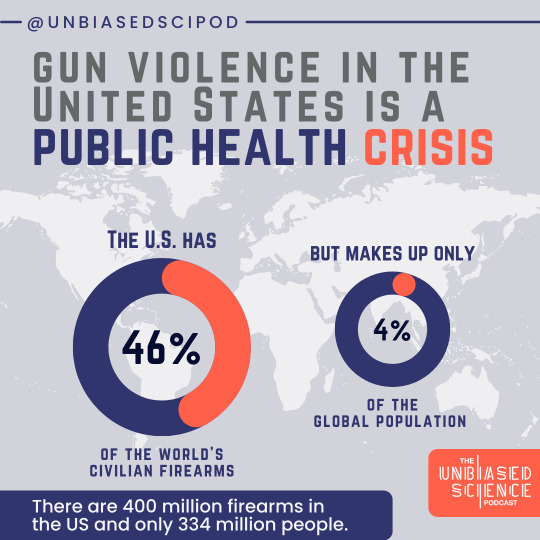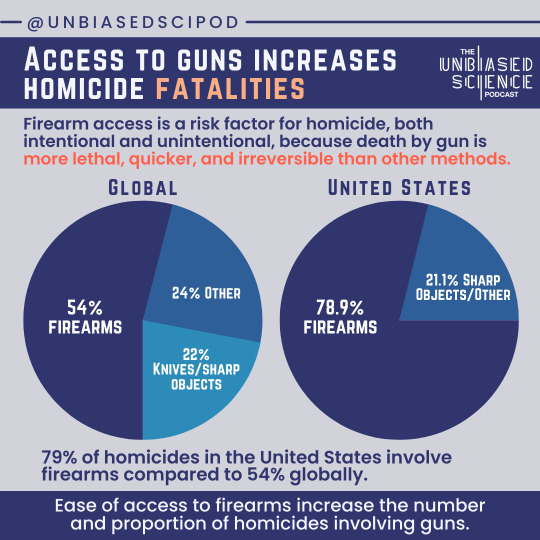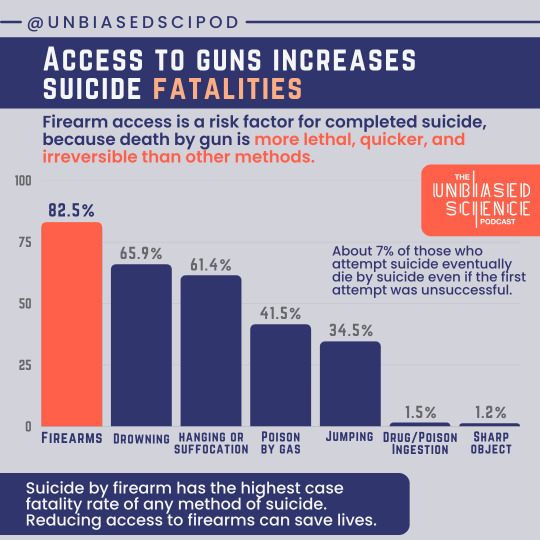Don't wanna be here? Send us removal request.
Audio
I know how awkward it is to share a bed here at your aunt’s house, son, but we’ll just have to make do…
3K notes
·
View notes
Text
my English prof teaching abt cover letters today and me trying not to bring up the luke skywalker cover letter post:

181K notes
·
View notes
Text

When mom told me she planned a vacation the day after I celebrated my college graduation, I was ecstatic. I had worked hard for years, it was time for some time off, and I couldn’t wait to kick back and relax. Unfortunately my dad and siblings couldn’t make it, but mom and I got along great together. The next morning, mom and I went to the airport. I noticed mom had a very short skirt on, I guess she was excited and dressed for the beach. I also noticed that she had incredibly toned legs, and I couldn’t help but stare whenever I could, walking behind her. When we were picking up our tickets, a gust of wind blew her skirt up, and I got a full view of her ass. I immediately felt the pressure in my pants grow, and feral thoughts of what I could do to her began to float through my mind. Well, I guess I’ve had some latent sexual feelings for my mother. It’s a good thing I had a long flight ahead of me to work through these feelings, so we could freely enjoy our time together. But to my surprise, I couldn’t rationalize these lustful feelings and make them go away. Instead, I spent the whole flight completely hard, thinking increasingly perverted thoughts about my mother. First I imagined putting my hands on her thighs and having an open conversation with her as a distraction. This fantasy was guided by my constantly-shifting mother in the seat beside me. She kept crossing and un-crossing her legs, and fidgeting with her skirt. What if I just reached out and asked her if she was comfortable? Next I imagined what it’d be like if she reached over and stuck her hand down my pants, and wrapped her slender fingers around my dick. Of course, what if we had sex? Mile-high club with mom? Needless to say, I was on the verge of cumming in my pants by the end of the flight.

We got to our hotel, and it was phenomenal. Great kitchen, great TV, the whole bit. But nothing was as phenomenal as my mom. We were going out on our first night here, and she was dressed to the max. A maroon, low-cut dress to complement the perfect tan of her legs, a sexy shade of hot-pink nail polish, and, if my quick glimpse was accurate, a pink-and-white striped thong. I was having a hard time breathing normally. “Oh fuck, it’s so hot down here,” I heard mom say. What the hell? Mom never swore. Come to think of it, she didn’t really dress this way either. Crazy fantasies started growing in my mind – what if mom was trying to seduce me? Is that why she dressed so scantily from the moment we left for the airport? Did she plan a time when only she and I were free? Did she want to go out to lower our inhibitions? I knew my dick was thinking for me, so I excused myself and went to the bathroom to rub one out. I gushed out ropes of cum as I masturbated to my mom. Maybe the best nut I’ve ever had. When I walked out I was startled to see mom right outside of the door.
“Mom…?”
“Oh hi honey, are you ready to go out?”
“Yeah sure, let’s go.”
One side of me wanted to believe she had been listening, or even looking, at me. Whatever the case was, all vacations with mom had always been memorable when I was a kid, and I felt like now as an adult, that wasn’t going to change.
2K notes
·
View notes
Text

Walking up naked beside your own mum can be a little awkward; first you see her face and it's the face of your mum as you remember it, but then you take a look at her tits and start having flashbacks of how they were dancing under your face as you were pounding the fanny you've come from. Back at her face and now you're remembering even more details, how naughty her usually innocent and motherly face looked right after she was filled with a massive load of her son's seed.
For the next few weeks you naturally try to forget it and act natural. You tell yourself that it was just a tiny error of judgement and that it won't happen ever again. But just when you're almost convinced that your lives are back to normal, reality hits you hard. One morning as you're watching your mum prepare the usual sausage and bacon for the breakfast, she suddenly covers her mouth and rushes to the bathroom. Your heart starts pounding like a war drum as you wonder if that means what you think it means.
You don't have to wonder for much longer because the next day, she calls for you and asks you to sit beside her in a very serious tone. She breaks out the news to you and you feel like you've been struck by lightning. There's no denying it now, the things are never going back to normal. You have to contend with the fact that your mum is pregnant with the baby you've put inside her, right when you carelessly flooded her insides.
She also makes it clear that she wants to keep the baby, or babies as it is later revealed after the first sonogram. Destiny must have a sick sense of humor, what are the chances of your mother ovulating no less than two eggs the same night when you decided that casual incest was the solution to your horniness?
Now all you can do is watch your mum's tummy gradually grow to an enormous size, a constant reminder of what you've done. With the damage already done, there's no need to keep up the facade. You're already an incestuous pervert so you might as well enjoy it. This is what you tell yourself when you're holding your own mother by her huge pregnant belly, pounding in and out of her and watching her dancing tits spread milk in every direction.
345 notes
·
View notes
Text

Oh honey thank you so much for taking me out for a Mother’s Day dinner! it meant so much to me and was so very special. I wasn’t sure I’d ever get the opportunity to wear this new outfit. No….. is there anything that I can do to thank you?
318 notes
·
View notes
Link
Henry “Enrique” Tarrio, the former longtime chairman of the extremist group Proud Boys, was indicted on a new federal charge of seditious conspiracy with four top lieutenants on Monday. The charges expand the Justice Department’s allegations of organized plotting to oppose through violence the certification of President Biden’s election victory, culminating in the attack on the Capitol by a mob on Jan. 6, 2021.
Tarrio, 38, was not in the District that day but allegedly guided activities from nearby Baltimore as Proud Boys members engaged in the earliest and most aggressive attacks to confront and overwhelm police at several critical points on restricted Capitol grounds. Another defendant, Dominic Pezzola, of Rochester, N.Y., broke through the first window of the building at 2:13 p.m. with a stolen police riot shield, authorities said.
A 10-count superseding indictment returned Monday morning charges Tarrio, Pezzola and three other existing defendants — Ethan Nordean of Washington state, Joe Biggs of Florida, and Zachary Rehl of Pennsylvania — with “opposing the lawful transfer of presidential power by force,” eventually mustering and coordinating the movements of as many as 300 people around the Capitol that day. The defendants are accused of fomenting and spearheading a riot that stormed the Capitol, eventually forcing the evacuation of Congress as it met to confirm the 2020 election results.
18 notes
·
View notes
Audio
I know how awkward it is to share a bed here at your aunt’s house, son, but we’ll just have to make do…
3K notes
·
View notes
Photo




Comparing Gun Deaths by Country: The United States Is in a Different World
A common misconception we hear is that the gun violence epidemic in the US is due to mental illness issues, not gun issues.
Here is the data from 14 countries considered to be similar in terms of income, to eliminate poverty as a confounding variable. However, countries from the majority of continents are represented. Countries included are the US, Canada, France, Switzerland, Germany, Italy, Japan, Australia, New Zealand, Ireland, UK, Spain, Israel, and Norway. As you’ll note, very similar prevalence of mental illness are reported among these countries. Mental illnesses here also include substance use disorders.
Indeed, the United States sits somewhere in the middle among the spread of mental illness prevalence, with a reported value of 16.93% of the population experiencing mental illness. Several other countries rank higher, including Australia, New Zealand, Spain, Switzerland, and Ireland. However, when comparing gun deaths per 100,000 persons in each of the countries, the difference is quite stark. Only the United States has a rate higher than 2.5 per 100,000 individuals – and it is substantially higher, at a rate of 11.9 gun deaths per 100,000 individuals.
The United States has a population of 334 million, which is approximately 4% of the global population. However, the US accounts for 46% of the world’s civilian firearms. More than that, there are more guns than people in this country. There are approximately 400 million guns, compared to 334 million people, which means there are 120 guns for every 100 people in the US. There is an ease of access to guns in the United States that is not prevalent elsewhere in the world.
As a result, firearm-related deaths are impacted here in the US, including both for homicide and for suicide. Firearm access is a risk factor for homicide, both intentional and unintentional, because death by gun is more lethal, quicker, and irreversible than other methods. As discussed previously, mental illness is not a determinant for gun violence; because firearms are so lethal so quickly, homicide by firearm can be impacted by rash decision-making, behavioral disturbances, and other factors. While firearm-related homicide accounts for 54% of homicide globally, 79% of homicides in the US involve guns. Ease of access to firearms increase the number and proportion of homicides involving guns.
The same is true for suicide. When assessing suicide methods by case fatality rate (the proportion of suicide attempts that are completed), firearm suicide has the highest fatality rate; 82.5% of firearm suicide attempts lead to completed suicide. This has substantial implications. About 7% of those who attempt suicide eventually die by suicide even if the first attempt was unsuccessful. Thus, ease of access to a weapon that has such a high fatality rate increases the number and proportion of suicide deaths in the US. Reducing access to firearms can save lives.
Ease of access and the sheer number of guns in the US has significant implications for public health and death by firearm.
Sources:
https://worldpopulationreview.com/state…/guns-per-capita
https://www.hsph.harvard.edu/…/means-matter/survival/…
https://www.pewresearch.org/…/what-the-data-says…/…
https://www.hsph.harvard.edu/…/means…/case-fatality/…
https://www.unodc.org/…/data-and-analysis/gsh/Booklet1.pdf
https://pubmed.ncbi.nlm.nih.gov/26551975/
https://academic.oup.com/epirev/article/38/1/140/2754868…
https://www.cdc.gov/nchs/fastats/homicide.htm
https://worldpopulationreview.com/…/united-states…
By Unbiased Science Podcast
835 notes
·
View notes
Text
Last December, the Supreme Court gathered to hear oral arguments in Shinn v. Ramirez, a case that could mean life or death for Barry Jones, who sits on death row in Arizona for the rape and murder of his girlfriend’s 4-year-old daughter, Rachel.
In 2018, a federal court overturned Jones’ conviction, concluding that he had failed to receive effective counsel, a violation of his Sixth Amendment rights. Had that happened, a federal judge ruled, “there is a reasonable probability that his jury would not have convicted him of any of the crimes with which he was charged and previously convicted.”
After losing in the 9th U.S. Circuit Court of Appeals, Arizona’s Attorney General appealed the decision to the Supreme Court. During those oral arguments, state prosecutors repeatedly argued that “innocence isn’t enough” of a reason to throw out Jones’ conviction.
On Monday morning, by a 6-3 vote, the Supreme Court concurred: Barry Jones’ innocence is not enough to keep him off of death row. The state of Arizona can still kill Jones, even if there exists a preponderance of evidence that he committed no crime.
The crime for which Jones was convicted is horrific. The little girl, Rachel, died from peritonitis, the result of a rupture in her small intestine that the state of Arizona claimed came from repeated physical and sexual abuse.
But Jones’s lawyers never questioned the physical evidence that led to his conviction. As Liliana Segura, an investigative reporter for The Intercept, pointed out in an exhaustive piece last year:
“Had Jones’s lawyers been up to the task, there was plenty they could have done to defend their client. They could have pointed out that the lead detective, who examined Rachel at the hospital, didn’t bother to investigate how or when the child sustained her fatal injury — or consider a single other suspect aside from Jones. They could have called a medical expert to show that there was no real evidence that the child had been raped. Most crucially, Jones’s lawyers could have called a pathologist to challenge the state’s theory of the crime, which rested on a narrow timeframe during which Jones had supposedly assaulted Rachel the day before her death. Medical experts now say that Rachel’s abdominal injury could not have become fatal so quickly.”
At the time of his trial, Jones was appointed a lawyer by the state—a fundamental constitutional right guaranteed to all criminal defendants under the Sixth Amendment. If a defendant argues, after conviction, that they failed to receive adequate counsel they are appointed new legal representation. If the new lawyer also provides ineffective counsel, a federal habeas appeal allows them to argue that their post-conviction lawyer was ineffective.
In effect, Jones argued that he received ineffective counsel not once—but twice. And the fault lies not with him, but rather with his lawyers who were appointed by the state of Arizona. By allowing him to introduce evidence of his innocence, a federal court would be, in effect, rectifying the mistakes made not just by his lawyers, but by the state responsible for appointing them.
In a 2012 case, Martinez v. Ryan, the Supreme Court ruled that a convicted defendant “is not at fault for any failure to bring a trial-ineffectiveness claim in state court”—and thus opened the door to appeals like the one brought by Jones.
On Monday the court gutted the precedent established by Martinez.
In its decision, written by Justice Clarence Thomas, the court ruled that a federal court, “may not conduct an evidentiary hearing or otherwise consider evidence beyond the state-court record based on the ineffective assistance of state postconviction counsel.” In short, a convicted defendant, like Jones, can be held responsible and kept in prison if his state-appointed lawyer provided ineffective counsel for his appeal.
It creates a truly bizarre, even Orwellian situation.
How can a defendant argue ineffective counsel if they can’t point to specific examples of that ineffective counsel? And how else can they do that other than by introducing new evidence not presented at trial, which would have likely acquitted them? Thomas is saying, in effect, that a petitioner has to rely on the record of a trial in which they were ineffectively defended—and their actual innocence is of secondary importance.
Thomas justifies the court’s decision by arguing that a federal review imposes “significant costs” on state criminal justice systems that includes potentially overriding “the State’s sovereign power to enforce ‘societal norms through criminal law.’”
One might argue that housing a man who committed no actual crime on Arizona’s death row “imposes significant costs.” One might even further argue that executing an innocent man imposes far greater societal costs—not just to the legitimacy of the criminal justice system, but more acutely to the man whose life the state ended.
As Justice Sonia Sotomayor noted in her dissent, “The Court’s decision will leave many people who were convicted in violation of the Sixth Amendment to face incarceration or even execution without any meaningful chance to vindicate their right to counsel.” She called the ruling “perverse” and “illogical,” which doesn’t really do justice to its utter obscenity.
SCOTUS’ decision will allow for an innocent man to, potentially, be killed by the state for largely procedural reasons. That Arizona even appealed the federal court’s decision in this case is truly depraved. The state could have sought a new trial or released Jones. Instead, state prosecutors took their appeal to the Supreme Court where, if they won, it risked putting a man to death when substantial doubt exists about his guilt.
What societal objective is furthered by such an outcome? Why would any prosecutor risk killing an innocent man? How does that benefit the cause of justice?
But far worse is that the Supreme Court is willing to ratify Arizona’s impaired judgment.
As Jonathan Zasloff, a law professor at UCLA, said to me, part of the problem is that “the court’s conservative majority does not fully accept the idea that there is a right to effective assistance of counsel.”
“One could argue that there is a cost for the lack of finality from new claims brought up on habeas. Every prisoner can just file a new motion to say ‘I was denied effective assistance.’” said Zasloff. “So do we as a society want to pay that price to make sure innocent people don’t get killed? Not for these guys. So much for the right to life.”
The same court that appears poised to overturn Roe v. Wade in order to protect innocents before they are born seems to lose interest when it comes to innocents later in life.
Yet, for close Supreme Court-watchers, the decision is hardly surprising. Thirty years ago, the court issued a ruling that a death row inmate presenting belated evidence of innocence is not necessarily entitled to have a federal court hear their claims. Justice Antonin Scalia went even further, noting “there is no basis, tradition, or even in contemporary practice for finding that in the Constitution the right to demand judicial consideration of newly discovered evidence of innocence brought forward after a conviction.” In an angry dissent, Judge Harry Blackmun described the majority’s reasoning as "perilously close to simple murder."
With their decision on Monday, the conservative members of the court have ratified Scalia’s depraved thinking. Simple logic would suggest that proving one’s innocence is enough to ensure that a wrongful conviction is overturned and an innocent man or woman is set free. Such moments are the emotional high points of countless Hollywood movies. It’s the way most Americans would like to imagine our justice system should work.
But with the current Supreme Court and its increasing refusal to abide by long-standing legal precedents, basic societal norms, and simple moral constructs, the reality is something else altogether. For the highest court in the land, the state of Arizona killing an innocent man is not a perversion of the criminal justice system, but rather emblematic of its smooth functioning.
58 notes
·
View notes
Text
Where are all the Priests kneeling outside the Texas school praying for the victims?
You know, like they kneel on the sidewalks outside Planned Parenthood?
Where are all the Priests refusing communion to politicians who vote against stronger gun laws?
Where are all the Priests blaming Republicans for working with the devil to kill children?
Where are all the Priests arguing a six year old has a right to life?
302 notes
·
View notes

